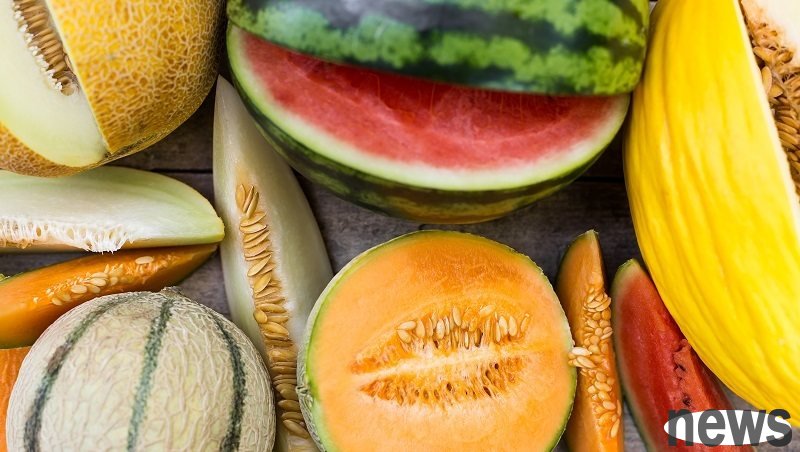The "Eat Husbandry and Eyes" comments we hear from a small eye on the dining table. This is indeed because the beta-Husbandry in Husbandry can be converted into vitamin A, which is a necessary nutrient for maintaining normal vision. But wh...

The "Eat Husbandry and Eyes" comments we hear from a small eye on the dining table. This is indeed because the beta-Husbandry in Husbandry can be converted into vitamin A, which is a necessary nutrient for maintaining normal vision. But what are the importance of vitamin A to the body besides protecting the eyes? Why do we see less health foods or nutritional supplements that focus on vitamin A on the market? This article will explain the health effects of vitamin A, and will also explain what options for vitamin A are used in daily diet, and we should pay more attention to the risk of "overdose" than lack of vitamin A.
What is vitamin A?Vitamin A is a fat-soluble vitamin, also known as vitamin A and Vitamin A, which exist in various types, such as video alcohols, video aldehydes, video acids, video esters, etc. Vitamin A is absorbed in the kidney tract and more than 90% will be converted into viscose ester and stored in the liver.
{9 Helps the development and growth of teeth and bones 4. Maintain normal reproductive function 5. Antioxidant, neutralize harmful free radicals, and enhance physical resistanceTherefore, if vitamin A is lacking, it will cause night blindness, hair loss, dry skin, keratosis of hair follicles, dry eye disease, membrane or corneal softening and abrasion, bones cannot grow normally, teeth and tooths, and decreased immunity. However, with the current living standards in Taiwan, ordinary people are not likely to suffer from vitamin A deficiency.
What are the foods rich in vitamin A? 1. Animal liver (pig liver, chicken liver, beef liver, turtle liver, duck liver, etc.)2. Fish liver oil (fish liver oil is different from fish oil, and "fish oil" is responsible for supplementing EPA and DHA)
3. Egg yellow
4. Dairy products
5. Deep green and dark yellow vegetables.
Vitamin A mainly comes from the "β-Hushu", including:- Sweet Potato (sweetened): Nutritionist Gao Minmin pointed out that compared with other types of sweet potatoes, "red meat sweet potato" has the lowest heat per 100 grams, and contains the largest amount of vitamin A and vitamin C. - Husband - Black Beans - Spinach - Water Spinach - Rapeseed - Pumpkin - Melon 6. Fruit. Although vitamin A is usually richer in vegetables than fruits, how many fruits also contain some vitamin A: - Mango - Grapefruit - Melon fruits (cantaloupe, watermelon, papaya)
How much does the daily intake of vitamin A need?According to the reference intake of dietary nutrition of the Ministry of Welfare, daily vitamin A intake for different ages has an upper limit:
-3 years old: 600 micrograms-4-9 years old: 900 micrograms
-10-12 years old: 1700 micrograms
-13-15 years old: 2800 micrograms
- Generally, adults and pregnant women: 3000 micrograms
Eat five servings of fruits and vegetables every day to provide about 50% to 65% of the recommended amount of vitamin A intake for adults, so usually as long as you eat a balanced diet, there will be no vitamin A deficiency; the Taiwan Cancer Foundation also recommends that eating a small or half a large husband a day can supplement the most suitable amount of vitamin A. Basically, most people do not need additional supplements of vitamin A nutrients, especially internal organs, such as turtle liver, pig liver, etc., and taking a small bite a day will be a better choice.
Excessive dose of vitamin A can also be "poisoned"Because fat-soluble vitamin A cannot be excreted by drinking more water, excessive dose of vitamin A can easily cause poisoning symptoms, which may cause harm to the liver, bones and brain. The Food and Drug Administration of the Ministry of Fufu emphasizes that long-term consumption of large amounts of animal liver, fish liver oil or high dose supplements are the main causes of vitamin A poisoning. Therefore, parents who see vitamin A and D are also reminded that parents who are beneficial to growth hope to supplement their children's nutrition, but this does not mean that the more vitamin A is, the better. Relevant foods should be placed in places that are difficult for children to obtain to avoid excessive consumption and poisoning.
Symptoms of excessive vitamin A injection include:1. Disgust, vomiting 2. Headache 3. Dizziness, blurred vision 4. Muscle incongruence 5. Hair loss 6. Dry skin 7. Middle neural effect 8. Increased hydraulic pressure in the spinal cord 9. Liver fibrillation or cirrhosis 10. Muscle weakness 11. Bone pain or bone loss 12. Drowsiness or irritability 13. Newborn birth defects
So how should we take vitamin A? The principle is to not be partial to eating, avoid eating large amounts of internal organs, and to meet the body's needs for vitamin A.